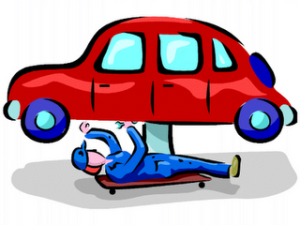
Purchasing a wheelchair van for personal use is not the kind of activity many prepare for in their lives. But then, if you or someone in your family has recently become wheelchair-bound, your life is full of new issues and concerns you probably never thought you’d have to deal with.
Transportation is important though, for work, doctor’s appointments and just being a part of the world. Since so many families end up using a lift-equipped van as the primary family vehicle, you have to consider multiple aspects to make your purchase.
If you are getting ready to buy your first wheelchair van, keep reading to find out how to make your decision.
What do you need from a lift?
If you are trying to determine whether a used van or a new purchase better suits your needs, you have to consider not only the immediate cost, but the long term costs, as well. Beyond that, though, you need to think about your lift needs.
Most companies that sell wheelchair accessible vans both new and used offer products that already have lifts installed. Because this is the case, you have to look at the size of the wheelchair you’ll be transporting.
Some wheelchairs, specifically electric ones and those constructed for people with more serious muscular issues, may be wider or taller than the standard, and clearance has to be considered in these situations in order to avoid injuries.
If the wheelchair is standard-sized, any lift will probably work well, but if you are dealing with a custom-made wheelchair, you’ll want to take plenty of good measurements to make sure to avoid injuries.
You also want to consider how the lift is controlled. Will the wheelchair-bound person be operating the lift? If so, controls need to be accessible and reachable either through proper door mounting or a remote control.
Who else will be riding in the van?
Companies sell both fill-sized wheelchair vans and wheelchair minivans because they address different sets of needs. For day-to-day travel involving just one or two people, a minivan may be a slightly less expensive option. If you’re planning for your wheelchair van to be your primary family transportation, though, you’ll want to seriously consider going with a full-sized wheelchair van.
You can usually fit a wheelchair into a full-sized van comfortably by removing only the second row of seating, for example, leaving the back row available to transport a larger family. This is not always the case, of course, but the smaller your wheelchair van, the more likely the lift will be installed in the back with all of the rear seating removed.
Other wheelchair van considerations
As mentioned above, different vans will have the lifts installed in different locations. Some designated handicapped parking spaces, for example, are wider in order to accommodate the lowering of a side lift. In other locations, parking may be such that a rear lift is more convenient.
Consider the places you will be going most often and, if possible, go survey the parking situation there. Use what you learn in your survey along with the consideration of how many passengers you need to transport to determine whether a full-sized wheelchair van or wheelchair minivan is a better option.
If you take into account comfort, clearance, lift accessibility and number of passengers, you should be able to build a list of requirements that will help you make the right wheelchair van purchase.


